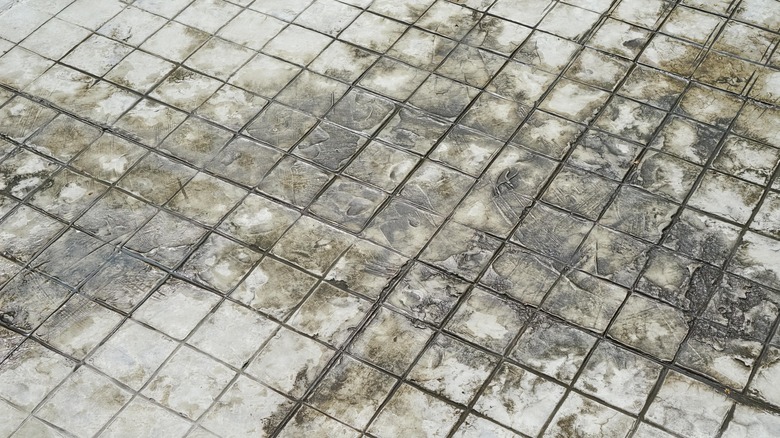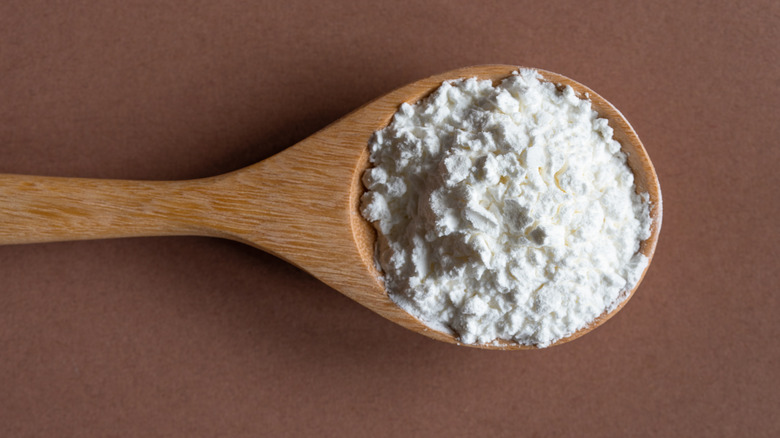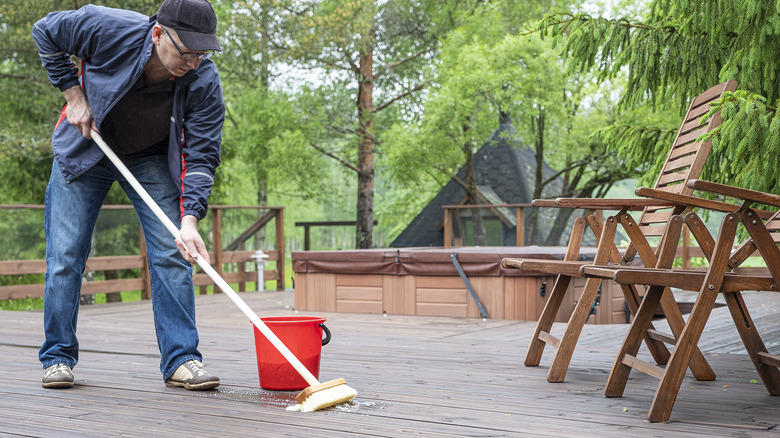The Pantry Ingredient That Will Solve Your Grease-Stained Patio Woes For Good
If you have the luxury of owning a patio, you may be familiar with the pain of keeping it clean, ready to host an impromptu gathering at the first sign of nice weather. Over time, patios can develop grease stains due to various outdoor activities and elements. Grilling is a significant contributor, as drippings from cooking can accumulate on the patio surface. Additionally, outdoor furniture with metal components, such as chairs and tables, may release oil or rust, leaving unsightly marks. Accidental spills of cooking oils, sauces, or even lubricants can also contribute to grease stains. Understanding these sources can help you proactively prevent and address this issue effectively. A package of cornstarch from your pantry can also be quite handy in cleaning those stains on your patio.
Your ordinary box of cornstarch serves as an effective grease stain remover on patios due to its absorbent nature and mild abrasive qualities. When applied to a grease stain, cornstarch acts as a natural absorbent, penetrating the stain and drawing out the grease from the surface. This absorption process helps break down the grease, making it easier to lift and remove when cleaning it. Additionally, cornstarch has a gently abrasive texture that aids in scrubbing away the grease without causing damage to the patio surface. Its eco-friendly and non-toxic properties make cornstarch a safe alternative to chemical cleaners, providing a natural solution for maintaining a clean and grease-free patio.
Using cornstarch to remove grease stains
Begin by identifying the affected area and removing any loose debris or dirt. This ensures that the cornstarch can directly target the grease without interference. Next, generously sprinkle cornstarch over the grease stain, covering it completely. Allow it to sit for at least 30 minutes but up to 24 hours, giving it ample time to absorb the grease. If the grease has moistened the cornstarch, sprinkle more on top to continue drawing out the stain.
After waiting, use a stiff-bristled brush or broom to scrub the stained area vigorously. The mechanical action, coupled with the absorbing properties of cornstarch, helps lift the grease from the patio surface. Pay extra attention to stubborn spots, ensuring thorough coverage. Once the scrubbing is complete, rinse off the patio surface with a hose or bucket of water mixed with dish soap. The cornstarch, now saturated with grease, should wash away easily. Ensure that all residue is removed to prevent any potential slip hazards. Inspect the treated area for any remaining stains. If necessary, repeat the process until the patio is entirely grease-free.
Types of patios to clean with cornstarch
This cornstarch method to draw out grease stains from your patio can be used on various materials. In fact, cornstarch is remarkably effective at removing grease stains on porous patio materials like concrete, brick, and natural stone. These surfaces' inherent absorbency allows cornstarch to penetrate the pores and ensure a thorough cleaning process. Alternatively, you can use baby powder or cat litter to tackle these stubborn stains, as they have similar absorbing properties to cornstarch.
While cornstarch is rather effective on natural, porous surfaces, non-porous patio materials, such as sealed or glazed tiles, may not respond as favorably to cornstarch. Furthermore, some surfaces are more prone to scratches, and the abrasive nature of the cornstarch paired with a stiff broom or steel scrub brush may inadvertently scratch or damage the surface of some patio materials. Before trying any cleaning method, it's best to determine which approach is appropriate for your situation. Furthermore, the cornstarch method is more effective if you tackle grease stains when they are fresh. The longer grease sits on a porous surface, the deeper it can penetrate, making it more difficult to remove the stain altogether. So, if you notice a fresh stain, it's best to tackle it immediately.


